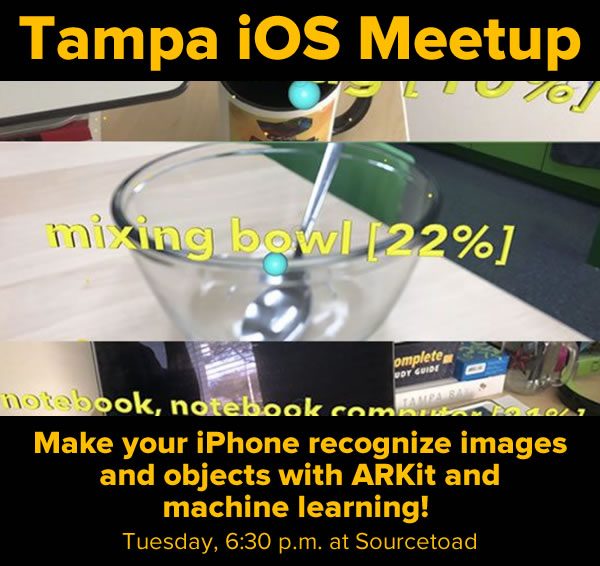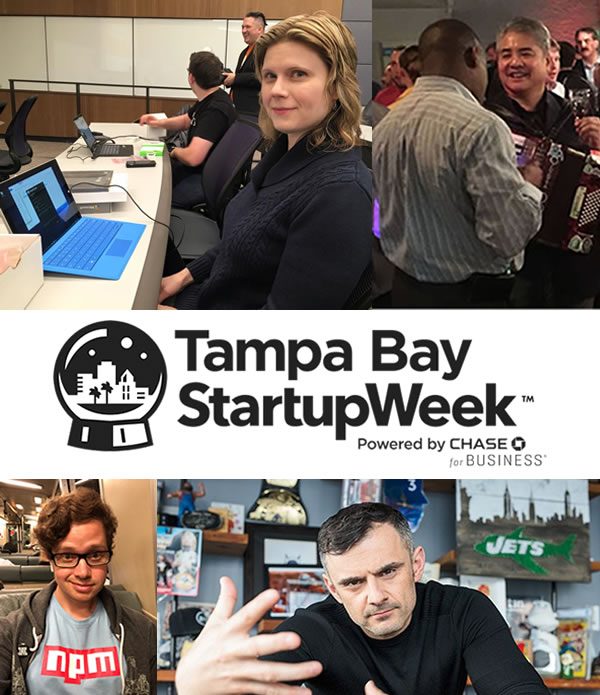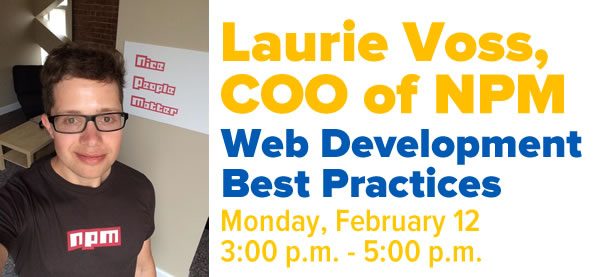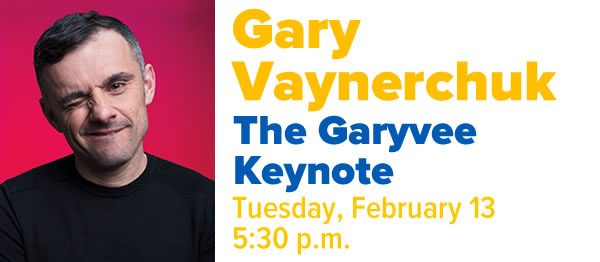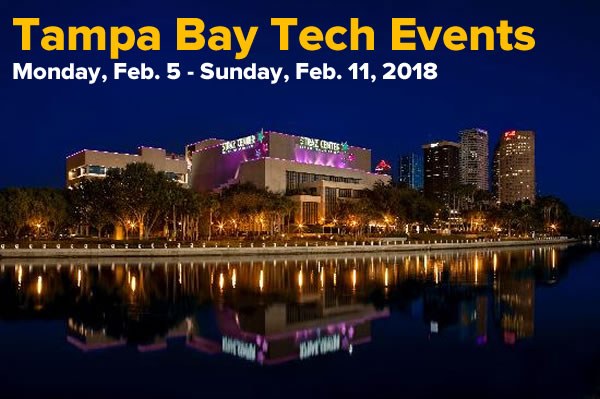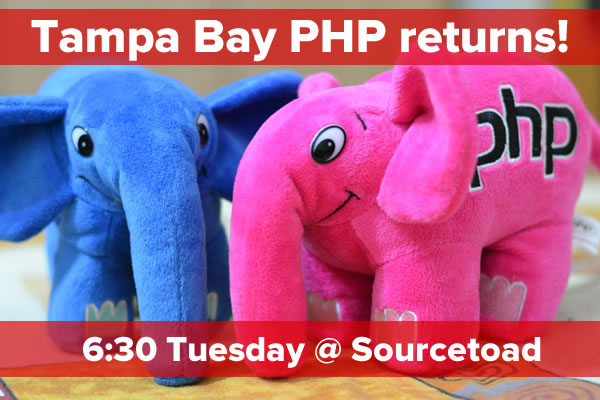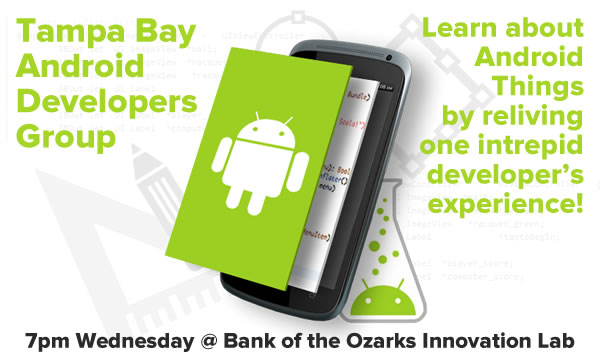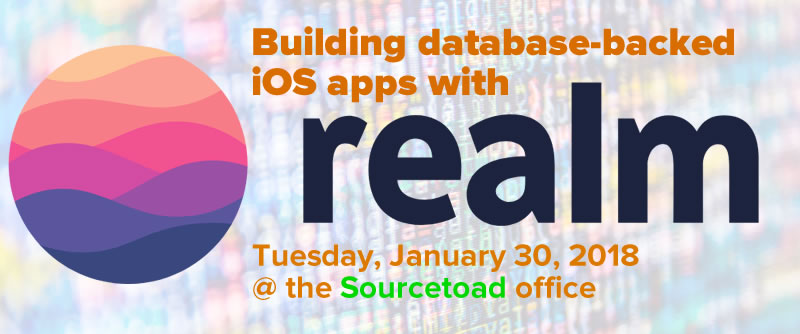
Every week, I compile a list of events for developers, technologists, tech entrepreneurs, and nerds in and around the Tampa Bay area. We’ve got a lot of events going on this week, and here they are!
Monday, February 26
- Lean Agile US Conference (Ft Lauderdale) – Who’s going? @ 8:00 AM to Tuesday, 4:00 PM
- Digital Photo Artists — Photo Shoot and Lighting Workshop @ 6:00 PM to 9:00 PM
- Social Justice Tech: Think, Talk, Do Time @ The HIVE (Found on the 3rd Floor of The John F. Germany Library), 6:30 PM to 8:30 PM
- Cool ‘n Confident Toastmasters @ SPC – St. Petersburg/Gibbs Campus, 6:30 PM to 7:45 PM
- South Tampa Toastmasters @ Unity of Tampa, 7:00 PM to 8:15 PM
- 3D Printer Orientation @ Tampa Hackerspace, 7:00 PM to 9:00 PM
- Nerd Night Out — Retro/Indie Gaming at Brew Bus (Pints & Pixels) @ Brew Bus Brewing, 7:00 PM to 11:00 PM
Tuesday, February 27
- What is your Banker Thinking? Souper Tuesday Lunch and Learn @ Station 2 Innovation Center, 11:30 AM to 1:00 PM
- Tampa Bay IIBA — Applying the BABOK: The BA Project Approach Featuring Lisa Glatfelter @ Facebook Live, 12:00 PM to 1:00 PM
- Westshore Toastmasters — FIVE Labs @ 12:00 PM to 1:00 PM
- Big Data Developers in Tampa — Machine Learning Everywhere. Build your ladder to AI. @ 1:00 PM to 2:00 PM
- Front End Creatives — Design Workshop Series: Solving a Real World Problem Through Design @ Bisk Education, 4:30 PM to 6:30 PM
- Brandon Boardgamers — Tuesday Night Gaming @ Cool Stuff Games, 5:00 PM to 8:00 PM
- Tampa Bay Bitcoin — BlockSpaces DTSP – Bootstrapping a Local Blockchain @ Grassroots Kava House, 5:00 PM to 7:00 PM
- Tampa Bay Writing, Publishing & Marketing Meetup — Six Month Writing Series, Week 1 @ The Kaizen Collaborative, 5:30 PM to 8:30 PM
- Florida Sitecore User Group (Tampa) — ConnectWise, 6:00 PM to 8:00 PM
- Weekly Open Make Night @ Tampa Hackerspace, 6:00 PM to 10:00 PM
- Tampa iOS Meetup — Make your iPhone recognize images and objects with ARKit and machine learning! @ Sourcetoad, 6:30 PM to 8:30 PM
- Game Club Tampa Meetup — Tuesday Nite Roleplayers (RPGs) (LFP) @ Grand Arena of Mind Expansion, 6:30 PM to 9:30 PM
- Portkey to Magic — Half Blood Prince Trivia Night @ 6:45 PM to 9:45 PM
- Anime, Nerds & Geeks — $5 MOVIES – ANNIHILATION @ 7:00 PM to 10:00 PM
- Tampa R Users Group — Scraping the web with R! @ Southern Brewing & Winemaking, 7:00 PM to 9:00 PM
Wednesday, February 28
- OPEN/Women’s Networking Event – 1 Million Cups — Entrepreneur Collaborative Center (ECC) @ 8:00 AM to 9:00 AM
- 1 Million Cups St. Petersburg — Suncoast Compost / PopUp Business School @ St. Petersburg Greenhouse, 9:00 AM
- 1 Million Cups Tampa — First Source Consulting, LLC / Doublemint Sitting LLC @ Mark Sharpe Entrepreneur Collaborative Center, 9:00 AM
- Tampa Entrepreneurs Network — How to Maximize Your Sales with Ultimate Webinar Funnel @ Online, 4:00 PM to 7:00 PM
- The Tampa Chapter of the Society for the Exploration of Play — Playing Games in the Alley @ The Alley at Southshore, 5:00 PM to 11:45 PM
- February 2018 StartUp Xchange — Pour Taproom, 5:00 PM to 7:00 PM
- Tampa Test Automation — Selenium: In Depth with Jim Evans @ Agile Thought Offices, 5:30 PM to 7:30 PM
- (Monthly) Azure User Group: Docker, Kubernetes and Azure Container Services @ Tribridge Inc, 6:00 PM to 8:00 PM
- Tampa Bay Agile — Product Owner Group – Feb: “Why didn’t I think of that?” @ South University – Tampa, 6:00 PM to 8:00 PM
- Grand Gamers of St. Petersburg Board Game Night @ Critical Hit Games, 6:00 PM to 11:30 PM
- Crypto Investors Club @ Panera Bread, 1908 4th Street North, Saint Petersburg, 6:30 PM to 9:00 PM
- Anime, Nerds & Geeks — The Dark Crystal! @ 7:00 PM to 10:00 PM
- Learn to Pick Locks @ Tampa Hackerspace, 7:00 PM to 9:00 PM
- Agile Social — Personal Agility Mini Workshop ‘N Mingle @ City Blue, 7:00 PM to 9:00 PM
- Women In Linux @ 7:00 PM
Thursday, March 1
- CEO Exchange Hosted @ Pilot Bank (Bay to Bay Blvd, Tampa), 11:00 AM to 1:00 PM
- Tampa# – C# and .NET — Coffee & Code @ Pour House at Grand Central, 11:15 AM to 1:15 PM
- Tampa Bay UX Group — Purely Social: A UX Happy Hour @ World of Beer, 5311 Avion Park Drive, Tampa, 5:00 PM to 8:00 PM
- Game Club Tampa Meetup — The Chosen, a home brew pathfinder variant (FULL) @ Grand Arena of Mind Expansion, 5:30 PM to 10:30 PM
- Brandon Boardgamers — Let’s Game on Thursdays @ Panera Bread, 3490 Lithia Pinecrest Road, Valrico, 5:30 PM to 9:30 PM
- Learn Cybersecurity Tampa — Capture The Flag @ SecureSet, 6:00 PM to 8:30 PM
- Tampa Bay Business Networking Happy Hour- Meet Up — Cocktails and Connections ~ 1st Thursday of the Month @ Cafe Delanie, 6:00 PM to 8:00 PM
- Drupal Website Development, Design & Technologies Meetup — Modern Web Design & Development Meetup, focusing on Drupal CMS @ Panera Bread, 2285 Ulmerton Road, Clearwater, 6:00 PM to 8:00 PM
- Tampa Bay Power BI User Group — Dashboard in an Hour @ Microsoft Office, 6:00 PM to 8:00 PM
- WordPress St. Petersburg — Improving WordPress Performance @ TEC Garage at SPC Downtown Campus, 6:30 PM to 8:30 PM
- Suncoast.js — Should Designers Code? & Should Founders Code? @ Bank of the Ozarks’ Innovation Lab, 7:00 PM to 9:00 PM
- Nerdbrew Trivia — Games & Grog @ Peabody’s Billiards and Games, 7:00 PM to 11:00 PM
- Largo Board Games Meetup — Alhambra @ 7:00 PM to 9:00 PM
- Tampa Bay UX Group — Office Hours @ Slack, 9:00 PM to 10:00 PM
Friday, March 2
- Lean Coffee for All Things Agile (St Petersburg) @ Panera Bread, 2285 Ulmerton Road, Clearwater, 7:30 AM to 8:30 AM
- Café con Tampa @ Oxford Exchange, 8:00 AM to 9:00 AM
- Tampa Bay Professionals (IT, Sales, HR & more) — HR PROS – 3 Motivational Leadership Techniques that Drive Engagement @ WebEx Live-Online Session, 8:30 AM to 9:00 AM
- Anime, Nerds & Geeks — Board Game Night @ 7:00 PM to 10:00 PM
Saturday, March 3
- Joomla! User Group Tampa — JoomlaDay Florida 2018 @ Hillsborough Community College – Ybor Campus, 9:00 AM to 6:00 PM
- Make THS Better Workday and cookout @ Tampa Hackerspace, 9:00 AM to 6:00 PM
- Cigar City Multirotors — Meet, Greet and Fly! @ Hamilton Park, 10:30 AM to 1:30 PM
- Tampa Bay Tech Comm — TAMPA: Networking Opportunity @ Panera Bread, 112 S Westshore Blvd, Tampa, 11:30 AM to 1:00 PM
- Tampa Bay Bitcoin — GRAND OPENING OF BLOCKSPACES – TAMPA’S BLOCKCHAIN CENTER @ BlockSpaces, 12:00 PM to 7:00 PM
- Grand Gamers of St. Petersburg — Board Games at Serenity Games @ Serenity Games, 5:00 PM to 8:00 PM
- SKILL: Intro To Soldering @Tampa Hackerspace, 7:00 PM to 9:00 PM
Sunday, March 4
- Machine Shop Lathe 101 (Members Only) @ Tampa Hackerspace, 9:00 AM to 2:00 PM
- Tampa Drones Meetup — Open Fly Day – Fly what you have! @ Sheffield Disc Golf Park, 11:00 AM to 2:00 PM
- Largo Board Games Meetup — Stone Age @ 1:00 PM to 4:00 PM
- Tampa Python Meetup — Class Project – Planning Session I @ 4:30 PM
